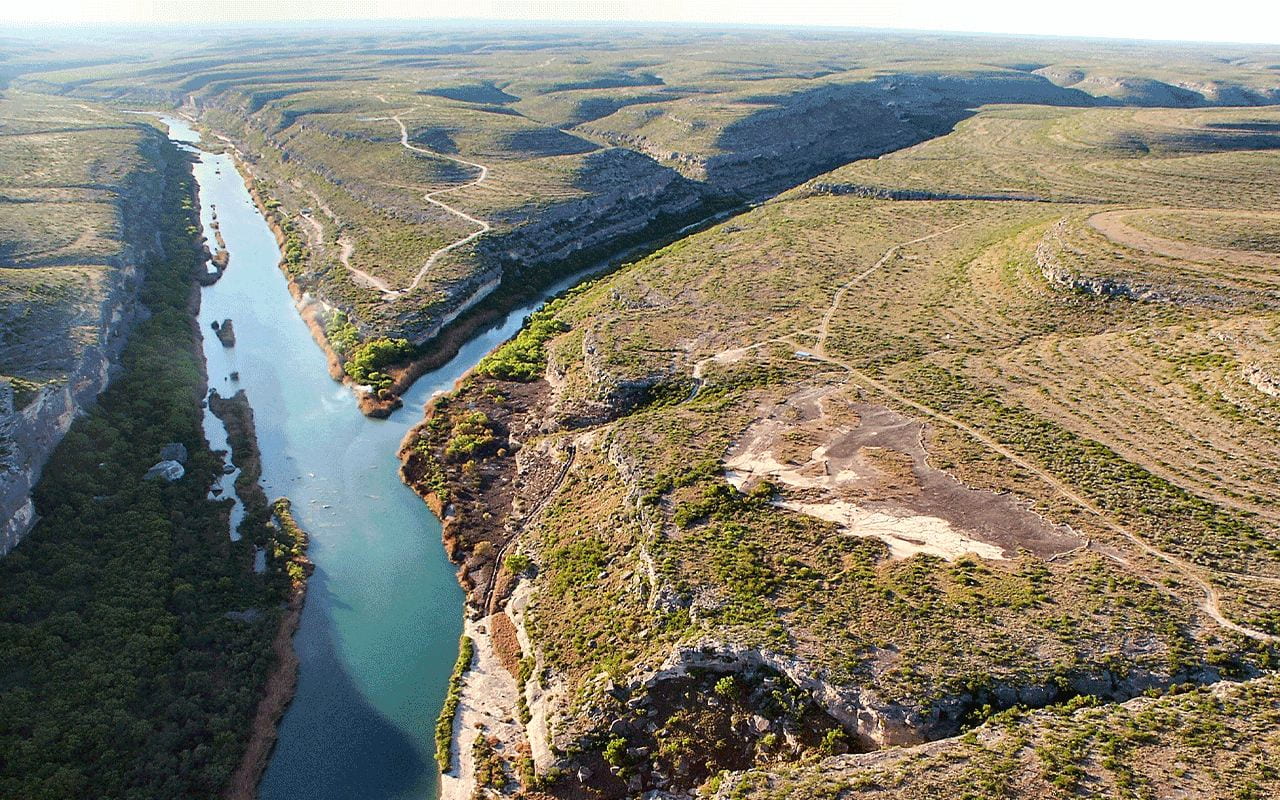With 38 public universities and 35 private colleges and universities in the state and many more across the country (and the world) interested in Texas, there’s a great deal of academic scholarship focused on water in the Lone Star State. In this column, I provide brief summaries to several recent academic publications on water in Texas.

Let’s start thinking about water!
Quantifying ecological return on investment

Pecos River at Lewis Canyon. Credit: rockcanyon, stock.adobe.com
Folks talk a lot about ecological services, but it’s rare (at least in my experience) to know what those services are worth. In this report (written as a report for policymakers), Smith and friends seek to quantify the return on investment for protecting land. The authors note that ~95% of Texas is privately owned, and less than 4% is protected from development. They note that if $200 million was used to protect 185,000 acres (30% fee simple and 70% conservation easements), a 20-year return on investment in ecosystem services might be $2.3 billion. Protection would involve keeping rural working lands working, protecting water resources, protecting wildlife habitat, and creating recreational opportunities for a growing population.
Citation
Smith, L.A ., Lund, A.A., and Lopez, R.R., 2023, Conserving Texas—Quantifying Ecological Return on Investment: Texas A&M Natural Resources Institute, Research Report Number 2023-1, College Station, Texas. https://nri.tamu.edu/publications/research-reports/2023/conserving-texas-quantifying-ecological-return-on-investment/
Total maximum daily loads and Escherichia coli trends in Texas freshwater streams
About 40% of water-quality impairments in Texas are from elevated fecal coliform. In response, the Texas Commission on Environmental Quality has, through July 2018, developed 187 total maximum daily loads (TMDLs) for different water bodies not meeting state and federal requirements. In addition, the Commission and the Texas State Soil and Water Conservation Board have supported the development of watershed protection plans, and the U.S. Department of Agriculture has sent $171 million to Texas farmers to implement best management practices to protect or improve water quality. Despite these efforts, Schramm and others found that only 7.4% of water quality monitoring stations had statistically decreasing E. coli concentrations after adopting a TMDL. They also found no difference in the odds of detecting E. Coli before and after adopting a TMDL. They note that E. coli can be a difficult measure of what is happening in a changing world.
Citation
Schramm, M., Gitter, A., and Gregory, L., 2022, Total maximum daily loads and Escherichia coli trends in Texas freshwater streams: Journal of Contemporary Water Research & Education, Issue 176, p 36-49, https://onlinelibrary.wiley.com/doi/full/10.1111/j.1936-704X.2022.3374.x
Multidecade trends of sea surface temperature, chlorophyll-a concentration, and ocean eddies in the Gulf of Mexico

Wave on the beach at sunset. Source: David Arment
Using remote sensing, Li and Wang2 investigated seasonal changes in the Gulf of Mexico’s climate trends. They found that the temperature of the Gulf is rising in all seasons and all places but with greater warming in the summer months (~0.40 °F per decade) than in the winter months (~0.09 °F per decade). The largest warming trends are in the northern parts of the Gulf [probably due to the continental shelf and the associated shallower depths]. Consistent with previous studies, they found elevated chlorophyll-a levels on the continental shelf, especially near the Mississippi, but no changes in the deeper parts of the Gulf. They also found evidence that, albeit slowly, eddies might be affected by climate change.
Citation
Li, G., Wang, Z., and Wang, B., 2022, Multidecade trends of sea surface temperature, chlorophyll-a concentration, and ocean eddies in the Gulf of Mexico: Remote Sensing, 14, 3754. https://doi.org/10.3390/rs14153754
Join Our Mailing List
Subscribe to Texas+Water and stay updated on the spectrum of Texas water issues including science, policy, and law.

